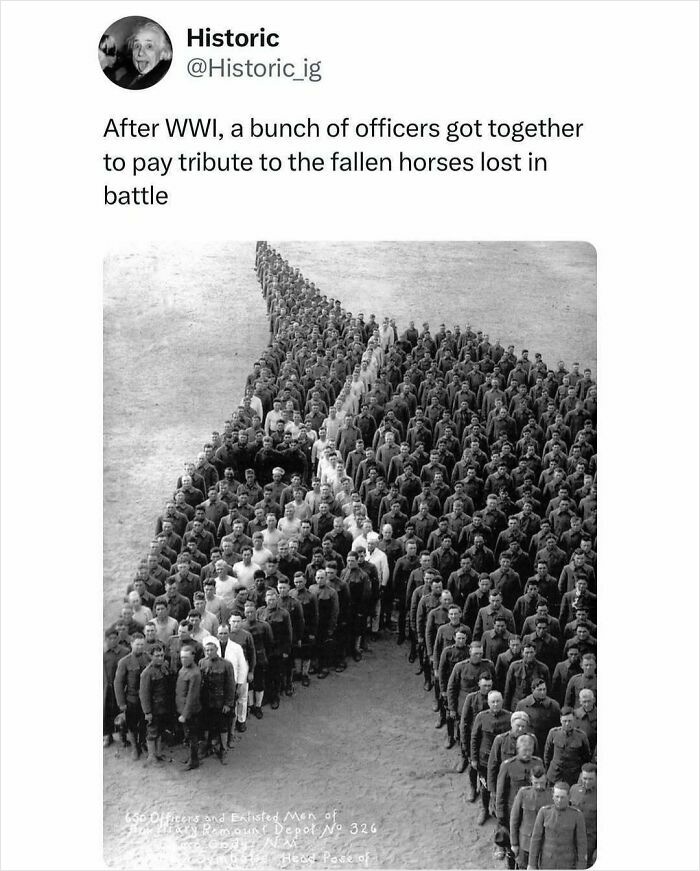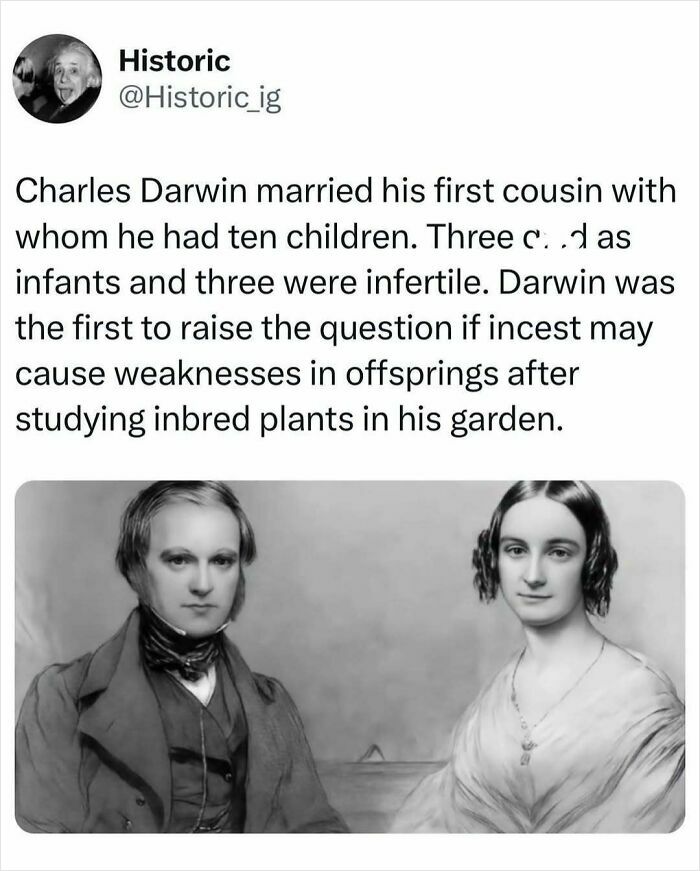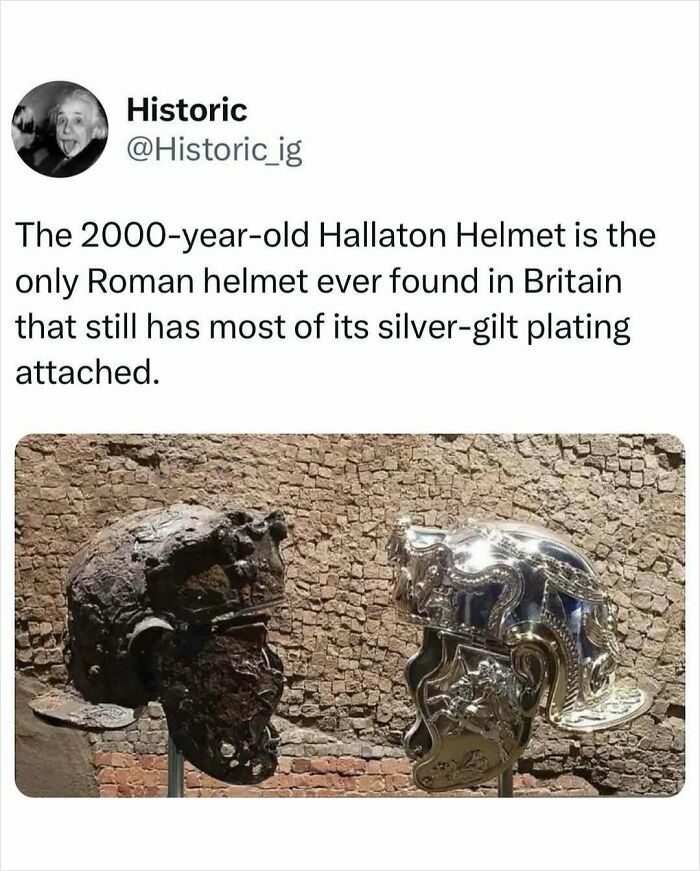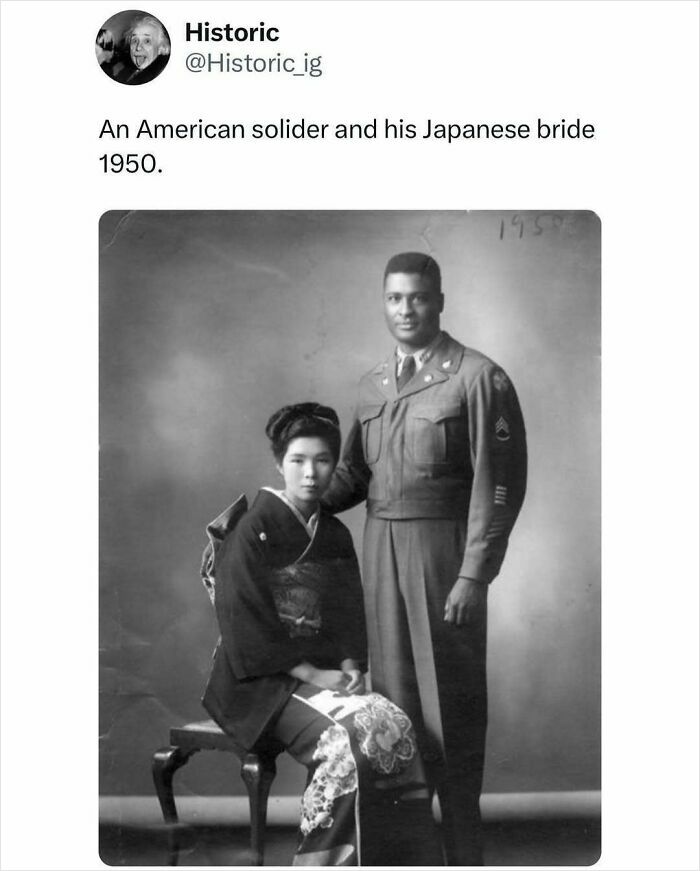
35 Rare Historical Photos That Share A New Perspective Of The Past
If you ever wonder about the fascinating stories that lie beneath the surface of history, the incredible Instagram page, “Historic”, is dedicated to shedding light on these hidden gems. It’s a treasure trove of vintage documents and photographs that offer a unique glimpse into our rich history.
Imagine stepping back in time and witnessing events, moments, and people that existed long before we were even born. That’s exactly what this archive does! With nearly a million dedicated fans, “Historic” curates its content to present a fresh perspective on our ancestors’ journey. When we looked through the account, we couldn’t resist sharing some of their most popular posts in the gallery below. Take a look and let’s explore the fascinating world of “Historic” together!
#1

Image source: historic
In 1978, a 16 year old girl defied concert rules by sneaking a 35mm camera into a Queen performance, capturing an iconic photograph of Freddie Mercury in his prime. The image, one of three she managed to take, vividly showcases Mercury’s dynamic stage presence, becoming a cherished piece of rock history shared widely online decades later. Posted to Reddit’s “OldSchoolCool” forum by her daughter, the photo resonates with fans, evoking the raw energy of Queen’s 1978 tour.
Its enduring appeal highlights the boldness of a young fan and the timeless charisma of Mercury, cementing the image as a nostalgic treasure.
#2

Image source: historic
On January 19, 1977, Miami experienced its first and only recorded snowfall, a remarkable event for a city known for its tropical climate. A powerful Arctic cold front brought temperatures down to the low 30s, allowing light snow flurries to fall across Miami-Dade and Broward counties, with some reports as far south as Homestead; the snow melted upon contact with the ground.
This rare weather event, caused by a collision of cold Arctic air and moist Gulf air, left residents in awe and made headlines, with newspapers like The Miami Herald proclaiming, “The Day It Snowed in Miami.” The brief snowfall, lasting from around 8 to 9:30 a.m., caused no significant accumulation but remains a cherished anomaly in Miami’s history, with no confirmed snowfall since.
#3

Image source: historic
In 2000, waves from the flooding Euphrates River, caused by the Birecik Dam, revealed stunning 2,200-year-old mosaics in the ancient city of Zeugma, Turkey. Founded in 300 BC by Seleucus I Nicator, Zeugma was a key Roman trading hub. Emergency excavations led by Professor Kutalmis Görkay uncovered vibrant glass mosaics, including depictions of the nine Muses, Oceanus and Tethys, and a young man, preserved in remarkable condition.
Many of these mosaics, once adorning wealthy villas, were relocated to the Zeugma Mosaic Museum in Gaziantep for conservation. The flooding submerged about 80% of Zeugma, but ongoing excavations continue to uncover artifacts, offering insights into the city’s Hellenistic and Roman heritage. The museum, the world’s largest of its kind, showcases these treasures, highlighting Zeugma’s cultural and artistic significance.
#4

Image source: historic
In 1918, during the Spanish flu pandemic, a remarkable family portrait captured a household posing outdoors, all wearing face masks, including their pet cat, as a precaution against the deadly virus that claimed millions of lives. This rare photograph, likely taken in the United States, highlights the widespread adoption of masks as a public health measure and the quirky inclusion of the family pet in the protective effort.
#5

Image source: historic
“On the 6th Day of the 2nd Month of the First Year of the Kampo era. Taking a moment of my free time, I wish to express my joy of the cat. It arrived by boat as a gift to the late Emperor, received from the hands of Minamoto no Kuwashi.
The color of the fur is peerless. None could find the words to describe it, although one said it was reminiscent of the deepest ink. It has an air about it, similar to Kanno. Its length is 5 sun, and its height is 6 sun. I affixed a bow about its neck, but it did not remain for long.
In rebellion, it narrows its eyes and extends its needles. It shows its back.
When it lies down, it curls in a circle like a coin.You cannot see its feet. It’s as if it were circular Bi disk. When it stands, its cry expresses profound loneliness, like a black dragon floating above the clouds.
By nature, it likes to stalk birds. It lowers its head and works its tail. It can extend its spine to raise its height by at least 2 sun. Its color allows it to disappear at night.
I am convinced it is superior to all other cats.”
#6

Image source: historic
In 1494, during a particularly harsh winter in Florence, the Medici family, prominent patrons of the arts, reportedly commissioned a young Michelangelo Buonarroti, then around 19 years old, to create a snowman in the courtyard of their palace. This unusual request came from Piero de’ Medici, who sought to impress guests and showcase the family’s influence by having the talented sculptor craft an elaborate snow sculpture, leveraging Michelangelo’s emerging reputation as an artist.
#7

Image source: historic
In the 12th century, a mischievous cat left its mark on the wet clay floor tiles of St. Peter’s Church in Wormleighton, England, creating a charming historical artifact. These paw prints, preserved through the firing process, offer a rare glimpse into daily life during the medieval period, showcasing the timeless curiosity of cats.
The tiles, discovered in the now-depopulated village’s church, highlight the local production of clay tiles, a common practice in medieval Europe. The deep imprints suggest a well fed feline, and their survival for over 800 years adds a whimsical touch to the church’s history, delighting modern visitors.
#8

Image source: historic
In 1864, a group of Japanese samurai, part of the Second Japanese Embassy to Europe known as the Ikeda Mission, visited Egypt en route to France. Led by Ikeda Nagaoki, the delegation of 36 men stopped at the Great Sphinx of Giza, where they were photographed by Antonio Beato, capturing a striking image of samurai in traditional attire, including winged kamishimo costumes and swords, standing before the ancient monument.
#9

Image source: historic
After WWI, a group of military officers gathered to honor the millions of horses that perished in the conflict. These animals, vital to transportation, logistics, and cavalry charges, suffered immense losses due to the brutal conditions of trench warfare, artillery bombardments, and disease. The officers, recognizing the horses’ sacrifice, organized a solemn tribute to commemorate their loyalty and service, acknowledging their critical role in the war effort.
#10

Image source: historic
In 1781, French sculptor Louis-Philippe Mouchy crafted a marble statue of Charles de Sainte-Maure, Duke of Montausier, renowned for its exquisitely detailed neckerchief. This masterpiece, housed in the Louvre Museum, showcases Mouchy’s exceptional skill in transforming rigid marble into a delicate, lace like fabric, creating an illusion of softness and intricacy rarely seen in stone sculpture.
Commissioned as a posthumous tribute to the Duke, who served as a guardian to the Great Dauphin, son of Louis XIV, the statue reflects Mouchy’s training under Jean-Baptiste Pigalle and his mastery of realist techniques. The neckerchief’s intricate carving, often mistaken for silk due to its lifelike texture, highlights Mouchy’s ability to push the boundaries of marble work, cementing his legacy in 18th century French sculpture.
#11

Image source: historic
Algeria ranks as the second country globally, after Italy, for its abundance of Roman ruins, a legacy of its prominence as a key province in the Roman Empire. Sites like Timgad, Djemila, and Tipasa feature remarkably preserved structures, including temples, theaters, and aqueducts, showcasing the empire’s architectural grandeur and cultural influence in North Africa from the 1st to 3rd centuries AD.
Among these, Timgad, founded around AD 100, stands out as Algeria’s most famous Roman site, a UNESCO World Heritage Site renowned for its well-preserved grid layout, triumphal arch, and intricate mosaics. Often called the “Pompeii of North Africa,” Timgad offers a vivid snapshot of Roman urban planning and daily life, drawing scholars and visitors to explore its historical significance.
#12

Image source: historic
A photograph from the 1920s captures two close companions, a man and his dog, posing together, their bond evident in their relaxed, trusting demeanor. The inscription on the photo, “There is between man and dog a kinship spirit that cannot be denied,” underscores the deep, unspoken connection between them, reflecting a universal truth about the loyalty and affection shared across species.
#13

Image source: historic
In the 1930s, British surrealist poet and art patron Edward James was deeply enamored with his wife, Austrian dancer Tilly Losch. Their marriage, though short-lived, was marked by his extravagant gestures of affection, including a whimsical act inspired by seeing Losch’s wet footprints on the stairs of their home after her bath.
Captivated by the fleeting beauty of the moment, James commissioned a custom carpet for their residence, Wimpole Street, with the pattern of her footprints intricately woven into it. This romantic, surreal tribute to Losch, preserved even after their divorce in 1934, reflected James’s eccentric devotion and his penchant for blending art with personal expression.
#14

Image source: historic
In a stunning achievement, the U.S. Physics Team won first place at the 2025 International Physics Olympiad (IPhO) held in Paris, France, from July 17-25, surpassing China, a long-standing powerhouse. The team, consisting of Agastya Goel, Allen Li, Joshua Wang, Feodor Yevtushenko, and Brian Zhang, secured five gold medals, making the U.S. the only country to achieve this feat in the competition, which saw 415 students from 87 nations compete under the theme “Physics Beyond Frontiers.”
#15

Image source: historic
In 1918, a photograph captured the astonishment of coal miners who uncovered a petrified tree stump entombed within a coal seam, a relic from millions of years ago preserved in stone. The image, likely taken in a mine, showcased the fossilized stump’s intricate details, a testament to the ancient forests that formed the coal deposits.
This discovery, frozen in time, fascinated the miners and highlighted the geological processes that transformed prehistoric vegetation into coal. The photograph remains a striking visual record of the intersection between human labor and the deep history of Earth’s natural resources.
#16

Image source: historic
In 1159, King Henry Il of England granted a manor and 30 acres of land in Suffolk to Roland the Farter, a court jester, for his unique performance of simultaneously jumping, whistling, and farting before the royal court each Christmas. This annual spectacle, known as “unum saltum et siffletum et unum bumbulum,” was documented in the Liber Feodorum (Book of Fees), highlighting Roland’s role as a professional flatulist entertaining the king and his court.
The grant, equivalent to a significant estate, underscores the medieval court’s appreciation for such bawdy entertainment, reflecting the era’s earthy humor. Roland’s act, likely requiring considerable skill and control, earned him a lifelong tenure and a place in history as one of the most unusual recipients of royal patronage, with his descendants possibly inheriting the land for continuing the tradition.
#17

Image source: historic
On March 10, 1967, during a Vietnam War bombing mission over a North Vietnamese steel mill, Captain Bob Pardo and his wingman, Captain Earl Aman, both piloting F-4 Phantom Ils, were hit by anti-aircraft fire. Aman’s jet suffered severe damage, losing fuel rapidly and unable to reach safety, facing the risk of ejection over enemy territory. Pardo, despite his own plane being damaged, refused to abandon his wingman and devised an unprecedented plan to save Aman’s crew.
Pardo instructed Aman to lower his tailhook and positioned his F-4’s windscreen against it, pushing the crippled jet nearly 88 miles to Laotian airspace. Despite turbulence, a fire in one of Pardo’s engines, and his own low fuel, the maneuver, known as “Pardo’s Push,” allowed all four crew members to eject safely over friendly territory, showcasing extraordinary courage and ingenuity.
#18

Image source: historic
On May 10, 2023, in Alpena Township, Michigan, 13 year old Owen Burns became a hero when he used his slingshot to thwart a kidnapping attempt on his 8 year old sister. Hearing her screams, Owen quickly grabbed his slingshot and fired a marble and a rock, striking the 17 year old assailant in the head and chest, allowing his sister to escape unharmed.
The incident, widely reported by outlets like The Guardian and NPR, highlighted Owen’s quick thinking and bravery, earning him praise as a local hero. The suspect, later identified with a marble-induced injury, was apprehended by police, and Owen modestly attributed his success to luck, noting the slingshot was a $3 clearance purchase.
#19

Image source: historic
In the United States during the early 1880s, specialized utensils like the ice cream knife and ice cream hatchet emerged as elegant tools for serving the increasingly popular dessert. Crafted by companies like Gorham Manufacturing Company, these Silver implements, often intricately designed with ornate handles and engraved blades, were used to cut and serve firm ice cream blocks, reflecting the era’s growing sophistication in dining culture.
The ice cream hatchet, patented around 1880, featured a broad, axe-like blade, sometimes with a bright-cut design, ideal for slicing through hard-frozen ice cream.
These utensils, often part of luxurious flatware sets, were symbols of refinement in affluent households, coinciding with the rise of ice cream’s popularity as a dessert in soda fountains and homes during the 1880s.
#20

Image source: historic
In November 2018, John Allen Chau, a 26-year-old American missionary, illegally traveled to North Sentinel Island in the Andaman and Nicobar Islands to convert the isolated Sentinelese tribe to Christianity. The Sentinelese, known for their hostility toward outsiders and protected by Indian law, had minimal contact with the modern world, and Chau’s solo mission involved sneaking past patrols to reach the remote island. Despite warnings and the tribe’s history of attacking intruders, Chau persisted, making multiple attempts to approach them with gifts and a waterproof Bible. On his final visit, the Sentinelese k**led him with arrows, and his body was left on the beach, sparking global debate about missionary zeal, cultural preservation, and the ethics of contacting uncontacted peoples.
#21

Image source: historic
In 1839, Charles Darwin married his first cousin, Emma Wedgwood, and together they had ten children, three of whom died in infancy and three others were infertile. Their close familial tie, common in Victorian England, later prompted Darwin to question the biological consequences of inbreeding, sparked by his observations of weakened inbred plants in his garden.
Darwin’s personal experience and scientific curiosity led him to hypothesize that incest might cause genetic weaknesses in offspring, a groundbreaking idea at the time. His studies laid early groundwork for understanding hereditary risks, influencing later research into genetics and the effects of consanguinity.
#22

Image source: historic
In 1904, Swedish sailor Carl Emil Pettersson shipwrecked on Tabar Island in Papua New Guinea, home to a tribe rumored to practice cannibalism. Captured and presented to the king, Pettersson won the heart of the king’s daughter, whom he later married.
After the king’s death, Pettersson became king of the island, ruling alongside his wife. This extraordinary tale of survival and romance inspired stories, including the character of Pippi Longstocking’s father, showcasing a remarkable blend of cultures.
#23

Image source: historic
In 1807, Napoleon Bonaparte, the formidable French emperor, faced an unexpected and humiliating ordeal during a rabbit-hunting event organized to celebrate the Treaty of Tilsit. His chief of staff, Alexandre Berthier, arranged for thousands of rabbits to be released for the hunt, but instead of using wild rabbits, tame ones from local farms were gathered. When released, these domesticated bunnies, hungry and unafraid of humans, mistook Napoleon for a source of food and swarmed him in a chaotic frenzy.
The rabbits overwhelmed Napoleon and his party, climbing onto the emperor and forcing him to fend them off with his riding crop as he retreated to his carriage. Despite attempts by his men to disperse the horde with whips and sticks, the rabbits persisted, creating a comical scene that turned the planned triumph into a bizarre defeat. This little-known incident remains a humorous footnote in Napoleon’s storied military career, showcasing how even the mightiest can be undone by the most unassuming foes.
#24

Image source: historic
In 1969, a photograph captured the in-flight snack service on a Scandinavian Airlines (SAS) flight, showcasing the airline’s commitment to quality dining at the time. Passengers could expect a snack service that included a platter with cheese, crackers, sliced meats, and fresh fruit served with a touch of Scandinavian hospitality, reflecting the airline’s reputation for sophistication in air travel.
This snapshot highlights the evolution of inflight catering, where airlines in the 1960s prioritized passenger comfort and culinary experience, even for shorter flights. The photo serves as a nostalgic reminder of an era when air travel was a luxurious novelty, with SAS setting a high standard for in-flight service.
#25

Image source: historic
On August 19, 1980, Saudia Flight 163, a Lockheed L-1011 TriStar, took off from Riyadh, Saudi Arabia, but a fire broke out in the aft cargo compartment seven minutes later. The crew successfully returned to Riyadh and landed the plane safely, a textbook emergency response, but the aircraft remained on the tarmac without immediate evacuation.
Tragically, all 301 passengers and crew perished due to toxic fumes and smoke inhalation, as the evacuation was delayed, with doors not opened for over 20 minutes after landing. The disaster, one of the deadliest in aviation history, highlighted critical flaws in crew communication, training, and emergency procedures, leading to significant changes in airline safety protocols.
#26

Image source: historic
In Star Wars: A New Hope (1977), Luke Skywalker’s landspeeder was designed to appear as if it were floating above Tatooine’s desert surface, a groundbreaking visual effect for its time. The production team achieved this by attaching mirrors to the sides of the vehicle, which reflected the desert ground and cleverly concealed the wheels, creating the illusion of a hovering craft without relying on computer-generated imagery.
This practical effect, developed by George Lucas’s team, showcased the ingenuity of 1970s filmmaking, blending physical props with optical tricks. The landspeeder’s iconic hover effect became a memorable element of the film, enhancing the immersive feel of Tatooine’s alien landscape and setting a standard for creative visual effects in cinema.
#27

Image source: historic
Ishi, the last known member of the Yahi tribe in California, survived in seclusion for 44 years after his people were decimated by settlers during the 19th-century Gold Rush era.
Following the systematic extermination of the Yahi through violence, disease, and displacement, Ishi lived alone in the wilderness, evading contact to preserve his safety and cultural practices.
In 1911, emaciated and alone, Ishi emerged near Oroville, California, and was taken in by anthropologists who studied his language and traditions. His life offered a poignant glimpse into the Yahi culture, but also underscored the devastating impact of settler colonialism, as he remained the sole survivor of his tribe until his death in 1916.
#28

Image source: historic
In December 2004, 10-year-old Tilly Smith, a British schoolgirl vacationing in Thailand, recognized the signs of an approaching tsunami after seeing the sea suddenly recede and the water begin to bubble. She had recently learned about tsunamis in her geography class and quickly warned her parents, insisting that they leave the beach immediately. Her parents took her seriously and alerted others, leading to the evacuation of the beach area at their resort. Thanks to Tilly’s quick thinking and knowledge, dozens of lives were likely saved that day. The tsunami, caused by a massive undersea earthquake in the Indian Ocean, devastated coastal areas across Southeast Asia, k**ling over 230,000 people. Tilly’s story received international attention and was praised as an extraordinary example of how education and awareness can have life-saving impact.
#29

Image source: historic
In 2008, humans transmitted a high-powered digital radio signal, known as A Message from Earth (AMFE), toward Gliese 581c, an exoplanet 20 light-years away in the Libra constellation, believed at the time to be potentially habitable due to its position in its star’s habitable zone. The signal, sent on October 9 using Ukraine’s RT-70 radar telescope, contained 501 messages selected through a public competition on the social networking site Bebo, forming a digital time capsule.
The message, traveling at the speed of light, is expected to reach Gliese 581c in early 2029, though subsequent research suggests the planet may be too hot to support life, resembling Venus more than Earth. If an intelligent civilization exists there and responds immediately, a reply could reach Earth around 2050, marking a significant moment in humanity’s attempt to connect with potential extraterrestrial life.
#30

Image source: historic
In the 1850s, a striking portrait captured a young girl with a distinctly grumpy expression, a rare and candid depiction for an era when photography was still a novelty. The image, likely a daguerreotype, shows her with a furrowed brow and pursed lips, defying the formal, composed poses typical of early portraits.
The portrait’s charm lies in its contrast to the idealized imagery of the time, revealing a universal, relatable moment of youthful discontent. Historians suggest the girl’s expression may reflect the era’s strict social expectations or simply the boredom of a long exposure time.
#31

Image source: historic
In 1988, a notable photo captured the album covers of Michael Jackson’s Bad and “Weird Al” Yankovic’s Even Worse displayed side by side, shortly after their releases. Jackson’s Bad, released in 1987, was a global sensation, while Yankovic’s Even Worse, a parody album released in 1988, humorously mimicked Bad’s cover art and included the hit parody “Fat,” poking fun at Jackson’s “Bad” single.
The photo became a cultural snapshot of 1980s pop music, showcasing the era’s blend of mainstream success and satirical creativity.
#32

Image source: historic
The Hallaton Helmet, discovered in 2000 in Leicestershire, England, is a 2,000-year-old Roman artifact, remarkable as the only known Roman helmet in Britain retaining most of its silver-gilt plating. Unearthed by amateur archaeologists, this ceremonial helmet, dating to the 1st century AD, likely belonged to a high-ranking auxiliary cavalry officer, reflecting Roman craftsmanship and the cultural integration of local Iron Age tribes.
Its intricate silver-gilt decoration, featuring laurel wreaths and busts, highlights its status as a prestigious object, possibly used in rituals or parades. Now housed in the Harborough Museum, the helmet offers a rare glimpse into Roman Britain’s military and artistic heritage, preserved uniquely due to its surviving plating
#33

Image source: historic
Adam Rainer, born in 1899 in Austria, is the only person in recorded history to have been classified as both a dwarf and a giant. In his early adulthood, he stood at just 4 feet 8 inches, meeting the criteria for dwarfism, likely due to a pituitary issue.
Around age 21, Rainer experienced an extraordinary growth spurt caused by a pituitary tumor, reaching over 7 feet 2 inches by his 30s, qualifying as a giant. This drastic transformation caused severe health issues, leaving him bedridden until his d£ath in 1950
#34

Image source: historic
In 1968, Zippo lighters became iconic among U.S. soldiers serving in the Vietnam War, often personalized with engravings reflecting their experiences, units, or sentiments. A lighter from this period, such as one engraved with
“Vietnam – Bong Son 68-69” or a soldier’s name like “Larry,” served as both a practical tool and a deeply personal keepsake, capturing the emotional weight of the conflict.
These lighters, typically made of chrome-plated brass, were carried by many troops and sometimes bore poignant inscriptions, such as
“Too young to vote but not to die.” However, collectors must be cautious, as some modern reproductions mimic the aged appearance of authentic Vietnam-era Zippos, with brass-only lighters being a telltale sign of fakes, as they were not produced during the war.
#35

Image source: historic
In 1950, during the U.S. occupation of Japan following World War II, a photo captured an American soldier with his Japanese bride, symbolizing the thousands of intercultural marriages that emerged from the era. These “war brides,” often meeting Gls through jobs at U.S. military PX stores or local communities, faced significant challenges, including restrictive U.S. immigration laws and societal prejudice against interracial unions, yet their relationships helped reshape cultural and legal landscapes.


















Got wisdom to pour?